Chrysler 2010 Annual Report Download - page 51
Download and view the complete annual report
Please find page 51 of the 2010 Chrysler annual report below. You can navigate through the pages in the report by either clicking on the pages listed below, or by using the keyword search tool below to find specific information within the annual report.-
 1
1 -
 2
2 -
 3
3 -
 4
4 -
 5
5 -
 6
6 -
 7
7 -
 8
8 -
 9
9 -
 10
10 -
 11
11 -
 12
12 -
 13
13 -
 14
14 -
 15
15 -
 16
16 -
 17
17 -
 18
18 -
 19
19 -
 20
20 -
 21
21 -
 22
22 -
 23
23 -
 24
24 -
 25
25 -
 26
26 -
 27
27 -
 28
28 -
 29
29 -
 30
30 -
 31
31 -
 32
32 -
 33
33 -
 34
34 -
 35
35 -
 36
36 -
 37
37 -
 38
38 -
 39
39 -
 40
40 -
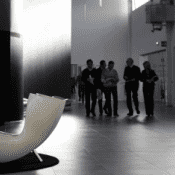 41
41 -
 42
42 -
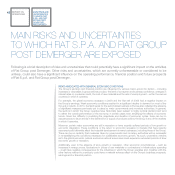 43
43 -
 44
44 -
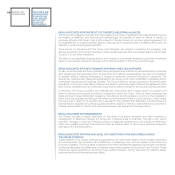 45
45 -
 46
46 -
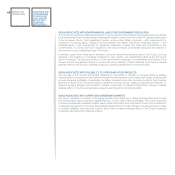 47
47 -
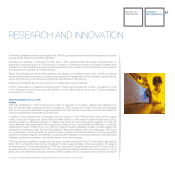 48
48 -
 49
49 -
 50
50 -
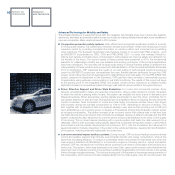 51
51 -
 52
52 -
 53
53 -
 54
54 -
 55
55 -
 56
56 -
 57
57 -
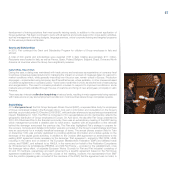 58
58 -
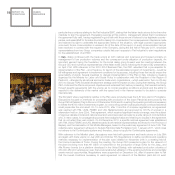 59
59 -
 60
60 -
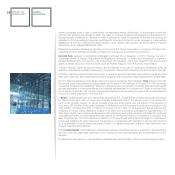 61
61 -
 62
62 -
 63
63 -
 64
64 -
 65
65 -
 66
66 -
 67
67 -
 68
68 -
 69
69 -
 70
70 -
 71
71 -
 72
72 -
 73
73 -
 74
74 -
 75
75 -
 76
76 -
 77
77 -
 78
78 -
 79
79 -
 80
80 -
 81
81 -
 82
82 -
 83
83 -
 84
84 -
 85
85 -
 86
86 -
 87
87 -
 88
88 -
 89
89 -
 90
90 -
 91
91 -
 92
92 -
 93
93 -
 94
94 -
 95
95 -
 96
96 -
 97
97 -
 98
98 -
 99
99 -
 100
100 -
 101
101 -
 102
102 -
 103
103 -
 104
104 -
 105
105 -
 106
106 -
 107
107 -
 108
108 -
 109
109 -
 110
110 -
 111
111 -
 112
112 -
 113
113 -
 114
114 -
 115
115 -
 116
116 -
 117
117 -
 118
118 -
 119
119 -
 120
120 -
 121
121 -
 122
122 -
 123
123 -
 124
124 -
 125
125 -
 126
126 -
 127
127 -
 128
128 -
 129
129 -
 130
130 -
 131
131 -
 132
132 -
 133
133 -
 134
134 -
 135
135 -
 136
136 -
 137
137 -
 138
138 -
 139
139 -
 140
140 -
 141
141 -
 142
142 -
 143
143 -
 144
144 -
 145
145 -
 146
146 -
 147
147 -
 148
148 -
 149
149 -
 150
150 -
 151
151 -
 152
152 -
 153
153 -
 154
154 -
 155
155 -
 156
156 -
 157
157 -
 158
158 -
 159
159 -
 160
160 -
 161
161 -
 162
162 -
 163
163 -
 164
164 -
 165
165 -
 166
166 -
 167
167 -
 168
168 -
 169
169 -
 170
170 -
 171
171 -
 172
172 -
 173
173 -
 174
174 -
 175
175 -
 176
176 -
 177
177 -
 178
178 -
 179
179 -
 180
180 -
 181
181 -
 182
182 -
 183
183 -
 184
184 -
 185
185 -
 186
186 -
 187
187 -
 188
188 -
 189
189 -
 190
190 -
 191
191 -
 192
192 -
 193
193 -
 194
194 -
 195
195 -
 196
196 -
 197
197 -
 198
198 -
 199
199 -
 200
200 -
 201
201 -
 202
202 -
 203
203 -
 204
204 -
 205
205 -
 206
206 -
 207
207 -
 208
208 -
 209
209 -
 210
210 -
 211
211 -
 212
212 -
 213
213 -
 214
214 -
 215
215 -
 216
216 -
 217
217 -
 218
218 -
 219
219 -
 220
220 -
 221
221 -
 222
222 -
 223
223 -
 224
224 -
 225
225 -
 226
226 -
 227
227 -
 228
228 -
 229
229 -
 230
230 -
 231
231 -
 232
232 -
 233
233 -
 234
234 -
 235
235 -
 236
236 -
 237
237 -
 238
238 -
 239
239 -
 240
240 -
 241
241 -
 242
242 -
 243
243 -
 244
244 -
 245
245 -
 246
246 -
 247
247 -
 248
248 -
 249
249 -
 250
250 -
 251
251 -
 252
252 -
 253
253 -
 254
254 -
 255
255 -
 256
256 -
 257
257 -
 258
258 -
 259
259 -
 260
260 -
 261
261 -
 262
262 -
 263
263 -
 264
264 -
 265
265 -
 266
266 -
 267
267 -
 268
268 -
 269
269 -
 270
270 -
 271
271 -
 272
272 -
 273
273 -
 274
274 -
 275
275 -
 276
276 -
 277
277 -
 278
278 -
 279
279 -
 280
280 -
 281
281 -
 282
282 -
 283
283 -
 284
284 -
 285
285 -
 286
286 -
 287
287 -
 288
288 -
 289
289 -
 290
290 -
 291
291 -
 292
292 -
 293
293 -
 294
294 -
 295
295 -
 296
296 -
 297
297 -
 298
298 -
 299
299 -
 300
300 -
 301
301 -
 302
302 -
 303
303 -
 304
304 -
 305
305 -
 306
306 -
 307
307 -
 308
308 -
 309
309 -
 310
310 -
 311
311 -
 312
312 -
 313
313 -
 314
314 -
 315
315 -
 316
316 -
 317
317 -
 318
318 -
 319
319 -
 320
320 -
 321
321 -
 322
322 -
 323
323 -
 324
324 -
 325
325 -
 326
326 -
 327
327 -
 328
328 -
 329
329 -
 330
330 -
 331
331 -
 332
332 -
 333
333 -
 334
334 -
 335
335 -
 336
336 -
 337
337 -
 338
338 -
 339
339 -
 340
340 -
 341
341 -
 342
342 -
 343
343 -
 344
344 -
 345
345 -
 346
346 -
 347
347 -
 348
348 -
 349
349 -
 350
350 -
 351
351 -
 352
352 -
 353
353 -
 354
354 -
 355
355 -
 356
356 -
 357
357 -
 358
358 -
 359
359 -
 360
360 -
 361
361 -
 362
362 -
 363
363 -
 364
364 -
 365
365 -
 366
366 -
 367
367 -
 368
368 -
 369
369 -
 370
370 -
 371
371 -
 372
372 -
 373
373 -
 374
374 -
 375
375 -
 376
376 -
 377
377 -
 378
378 -
 379
379 -
 380
380 -
 381
381 -
 382
382 -
 383
383 -
 384
384 -
 385
385 -
 386
386 -
 387
387 -
 388
388 -
 389
389 -
 390
390 -
 391
391 -
 392
392 -
 393
393 -
 394
394 -
 395
395 -
 396
396 -
 397
397 -
 398
398 -
 399
399 -
 400
400 -
 401
401 -
 402
402
 |
 |

REPORT ON
OPERATIONS
50
RESEARCH
AND INNOVATION
Advanced Technology for Mobility and Safety
The principal objective is to equip Fiat Group with the necessary technological know-how in secondary systems,
electronics, telematics and preventive safety to improve mobility by making vehicles that are safer, more versatile and
more eco-compatible. Major results achieved in 2010 include:
Cooperative preventive safety systems. Safe, efficient and ecologically sustainable mobility is a priority
for all European citizens. Full collaboration between vehicles and between vehicle and infrastructure would
maximize results by providing complete information on vehicle position and movement and predicting
driver intentions. The European Commission has therefore chosen to co-fund major R&D projects – such
as SAFESPOT (coordinated by CRF), CVIS and PRE-DRIVE C2X – to study how wireless Vehicle-to-
Vehicle and Vehicle-to-Infrastructure communication technologies can improve safety and efficiency for
the mobility of the future. The current results of these projects were presented in 2010: the fundamental
elements for collaborative mobility are now available and working prototypes of the principal applications
have been developed. The next step will be large-scale testing in several member states to determine the
interoperability of these solutions and proceed with standardization. At the Cooperative Mobility Showcase
2010 in Amsterdam, CRF presented the results of on-road testing of technological solutions developed
under the SAFESPOT project and demonstrated the open, flexible platform developed through the CVIS
project, which offers more than 25 applications for traffic efficiency and road safety. For the PRE-DRIVE C2X
project, presented in September in Ulm (Germany), CRF used two demo vehicles to demonstrate a group
of applications using vehicular communication in real traffic conditions. The results of this project will serve
as the starting point for the integrated DRIVE C2X project, whose primary objective is to validate mobility
applications based on cooperative systems through road tests at various locations throughout Europe.
Driver Attention Support and Driver Style Evaluation. For trucks and commercial vehicles, driver
behavior is fundamental to safety and reducing consumption. Using a video camera to monitor the extent
to which the vehicle is staying within its lane, the system can evaluate the driver’s level of distraction and
fatigue/drowsiness. When appropriate, warning signals are activated to alert the driver, prompting him to
pay greater attention or stop and rest. Driving style can be a significant factor is reducing the environmental
impact of vehicles. Tests conducted on trucks and other heavy commercial vehicles have in fact shown
that improper driving can increase consumption by 10% to 15%, depending on the type of mission. This
fact, together with an analysis of data from systems already in use, such as Fiat eco:Drive, led to CRF and
Iveco establishing a joint working group to develop a Professional Driving Style Evaluation system aimed
at reducing consumption. This system consists of an on-board device that collects data in real time from
the CAN network (the local network that connects the intelligent devices of different vehicles) and the GPS
system, analyzes the data, transmits it to a remote center and provides feedback to the driver on the quality
of his driving. This on-board device interfaces with a remote system that feeds the data received into a
database, which is then processed using specific algorithms to evaluate driving style, mission, performance
and problems with the vehicle. Development will continue in 2011, with the completion and refinement of
several calculation modules, integration of the system in the vehicle architecture, development and finalization
of the system, including extensive testing with end customers.
Low environmental impact auxiliary systems. During the year, CRF continued testing innovative climate
control and auxiliary systems that minimize environmental impacts and energy consumption, while at the
same time increasing efficiency. To ensure a comfortable interior environment is maintained even when the
main engine is switched off (Start&Stop) or a combustion engine is not being used (i.e., hybrid and electric
vehicles), CRF has developed an innovative device powered by an electric compressor that functions as a
heat pump. This system, which was developed on an Iveco Daily, uses a cycle inversion valve that allows the
evaporator and condenser functions to be switched, enabling the generation of hot and cold air in the vehicle
interior through a single exchanger. The obvious strong point of this system is the energy saving operation of
the compressor, which can be controlled independently from the main engine. Over the next few years, this
